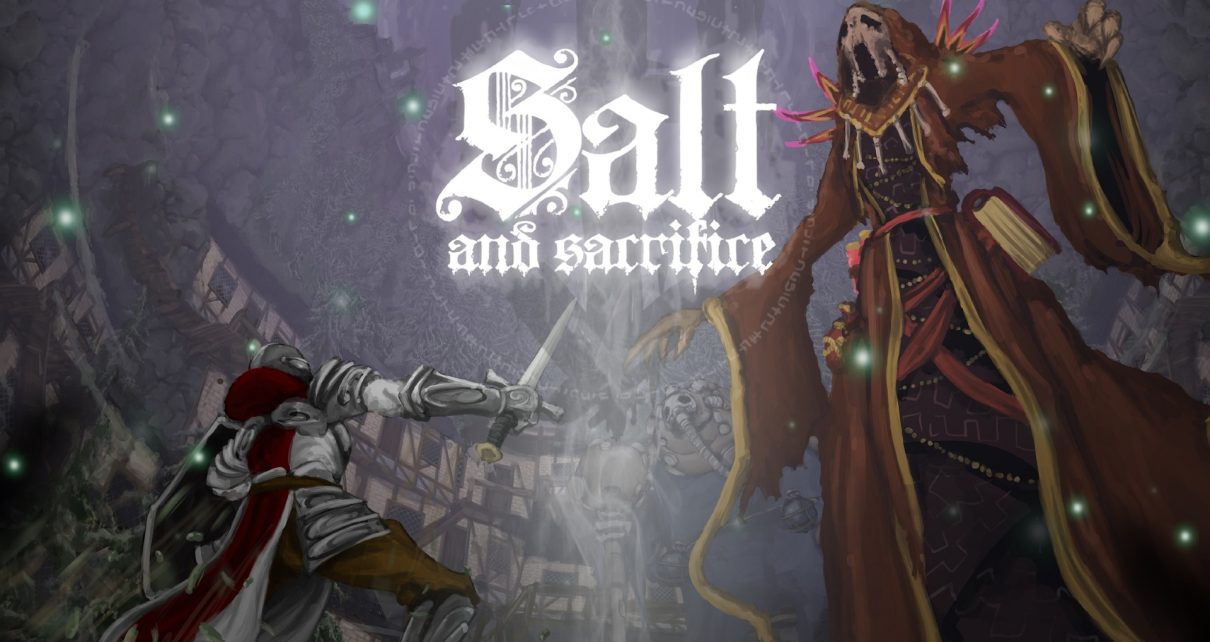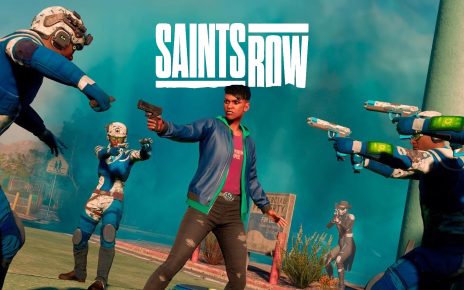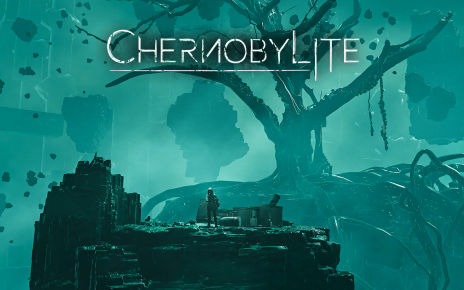Salt and Sacrifice is the latest release from two-person development team, Ska Studios. It’s easy to think of Salt and Sacrifice as an out-and-out sequel to 2016’s Salt and Sanctuary. However, it is far more like a successor, an entry in the same franchise but standalone in many important ways. Whilst this iteration does stay true to the 2D, “metroidvania” style of gameplay, it also deviates by introducing an entirely new mechanic. The platforming is back, the art style is characteristic, but the gameplay loop adds a fresh layer of chance to exploring familiar areas.
Due to the success of Elden Ring, Salt and Sacrifice was released amidst an ever-growing obsession with From Software titles. Therefore, it’s inevitable that this game will be labeled a “Soulslike”. I have my own qualms with using that term, though there are undeniable similarities with the Dark Souls formula to be found here. To my mind, the biggest similarity between Salt and Sacrifice and Dark Souls is in the fact that Ska Studios have got the simple things right. Far from being an exercise in frustration like many “Soulslikes”, Salt and Sacrifice is fun, alluring, and highly addictive.

Story & Setting
Salt and Sacrifice is not a story-driven game. The plot here is good, but it’s not the pull. Simply put, you play as an “Inquisitor” – these are individuals convicted of a crime and agree to hunt mages in exchange for their freedom. From here on you travel to various regions to rid the land of the corruption that the mages have exposed it to. You do this by defeating them and devouring their heart.
That’s about it for the story. There is a bit of plot development further on in the game involving the King, but I’m not in the business of spoilers. The world of Salt and Sacrifice varies from decrepit woods, arid desert or sprawling, Egyptian-inspired temples. There’s a decent amount of variety on display visually and thematically and whilst the color palette of its predecessor was very drab, Salt and Sacrifice is extremely vibrant. Level design is good too. Being confined to the 2-Dimensional, the devs rely heavily on verticality and choice shortcuts that weave you within the levels. The regions themselves are split into smaller sub-areas that themselves lead back to a larger main part. That said, the world itself isn’t any sort of interconnected overall. There’s a hub world, called Pardoner’s Vale. Here you do all of your leveling and upgrading. Then you warp from here to the available regions. You’ll find yourself trekking along paths, leaping from, or grappling to platforms, and eventually even using ziplines to navigate these towering levels.

The regions have their own standard bosses, but you’ll spend most of your time looking for mages to duke it out with. In keeping with making sure the simple things are good, the world looks interesting, provides good diversity between regions, and is never dull. The soundtrack is also a vast improvement over Salt and Sanctuary, from world music through to mage/boss encounters.
Whilst the world(s) are great and the plot is serviceable, where Salt and Sacrifice really shines is, of course, the gameplay.
Gameplay
Salt and Sacrifice features all the basic combat tropes you would expect from a game like this. Light attacks, heavy attacks, dodge rolls, and spell casting. You level by amassing salt as you defeat enemies. Although, if you die, this salt is left in the spot you were downed in, requiring you to retrieve it. At Pardoner’s Vale, you can spend your salt on Black Starstones, which you then use to unlock different skills in a vast skill tree. Interestingly, you can refund skills, meaning that you can make your way out to a skill you really want but then refund all the prerequisites you don’t actually need. Then you can allocate those points elsewhere. I thought this was an excellent introduction to the leveling system, affording the player a lot of flexibility and the ability to really min-max a build. On that topic, build variety is on offer here. You can play anything from a heavy armor-clad, huge hammer-wielding strength build, or a nimble caster dealing devastating amounts of damage with spells. However, you’re not stuck on these paths, and you can really craft anything in between.
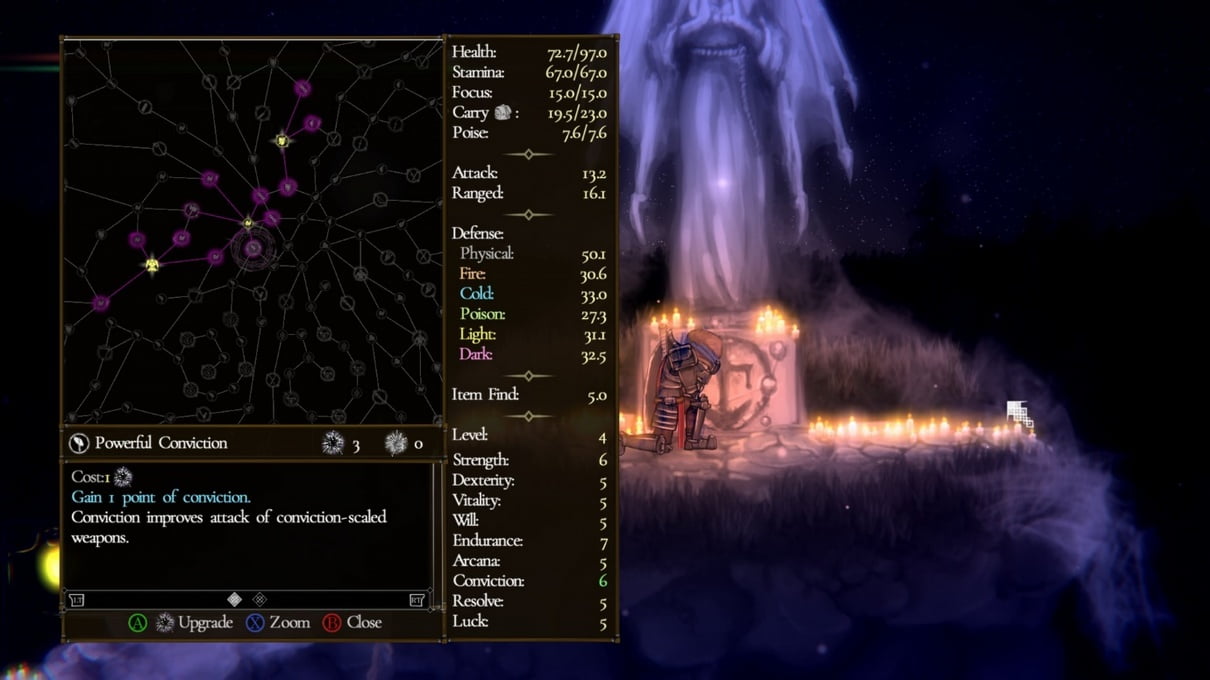
The true heart of the gameplay loop though are the mage hunts themselves. Comparisons have been made to Monster Hunter and I think that not only is this apt – but it’s a positive. Mages respawn, or you can hunt more powerful variations of existing mages. The mages start off really rather standard and elemental based. Cryomancers, pyromancers, hydromancers, etc. However, as you progress, you’ll run into mages capable of harnessing the power of blood, machines, dragons, and even mushrooms…

Once you’ve devoured a mage’s heart, you have access to its gear and weapons. To craft this stuff though, you’ll need materials specific to that mage. Of course, that means if you want a fancy new armor set, great blade, or casting stave, you’ll need to farm that mage until you have the necessary materials.
Thus, you get drawn into a loop of killing a mage, heading back to the hub, and seeing what gear you can craft or what extra materials you may need. Then, you head back out to challenge the mage again in the hope you can get it to drop those materials you’re looking for. The drops are percentage-based and there’s a handy bestiary that tells you what chance you have of getting materials to drop. In this way, actual progression becomes an afterthought, and your priority is acquiring that next bit of gear.

Other than the mage hunts, levels are built around inquisitor tools. The grappling hook is exactly as it sounds. There’s the Magnesin Supply which allows you to activate ziplines. The Luminstone illuminates hidden platforms and grapple points for a brief time. Then you’ll find the Ethercloth, which is like a parachute that allows you to catch rifts of air. All of these things give you the ability to reach previously inaccessible areas, rewarding revisiting earlier zones to find new loot, or perhaps even a new mage to hunt.
New to Salt and Sacrifice is an online multiplayer system. Replicating a Dark Souls approach, you can co-op, invade or just generally be a nuisance to other players. This is really fun as an invader known as a “Blueheart Runner”, where your goal is to kill certain enemies and consume their essence. Once you’ve gathered enough essence, an enemy will spawn which will fly straight for the other player. You can keep going with this up to a limit of three spawned enemies, thus making it harder and harder for the opposing player to progress to a mage fight.
As such, Salt and Sacrifice provides a good amount of content as a single player, but also the opportunity to cause chaos in PvP. There’s certainly no shortage of gameplay here!

Pros
The world itself and the enemy design are both fantastic. I loved the aesthetic of the environments and the enemies progressively become more unique and more intimidating. The process of farming mages for gear is such a fun mechanic. It took me eight hours to progress to the second region, purely because I was having such a blast refighting mages, feeling myself getting stronger with each encounter.
This kind of loop is bad for me, in the sense that I can never seem to pull myself away from the game! Often, I found myself saying “Just one more hunt!”, then the next thing I knew, hours had flown by – though I did have my God-tier new set up… For a brief moment anyway. That’s because once I got to the next region, there was newer, better gear that I wanted and thus the farm continued.

I also liked the difference between spells and “Runic Arts”. The former are, of course, various projectiles and the like. Runic Arts are essentially buffs and spells that are embedded into specific weapons. Whilst spells require investment into the magic-related stats and skills, Rune Arts are unlocked by acquiring investment in the use of Divine or Forbidden Glyphs. I ran a strength-focused build, but I still had access to huge, damage buffing Rune Arts without ever having to go down the magic tree. It meant that I still benefited from the various types of magic damage in the game without having to commit myself to becoming a caster or some sort of hybrid.
One of my primary frustrations with Salt and Sanctuary were the intense platforming sections. I should state here that it’s mainly because I’m bad at platforming in general. That said, whilst there are still some challenging leaps in Salt and Sacrifice, they’re nowhere near as prevalent and instead the focus is really on the mages and enemy encounters.
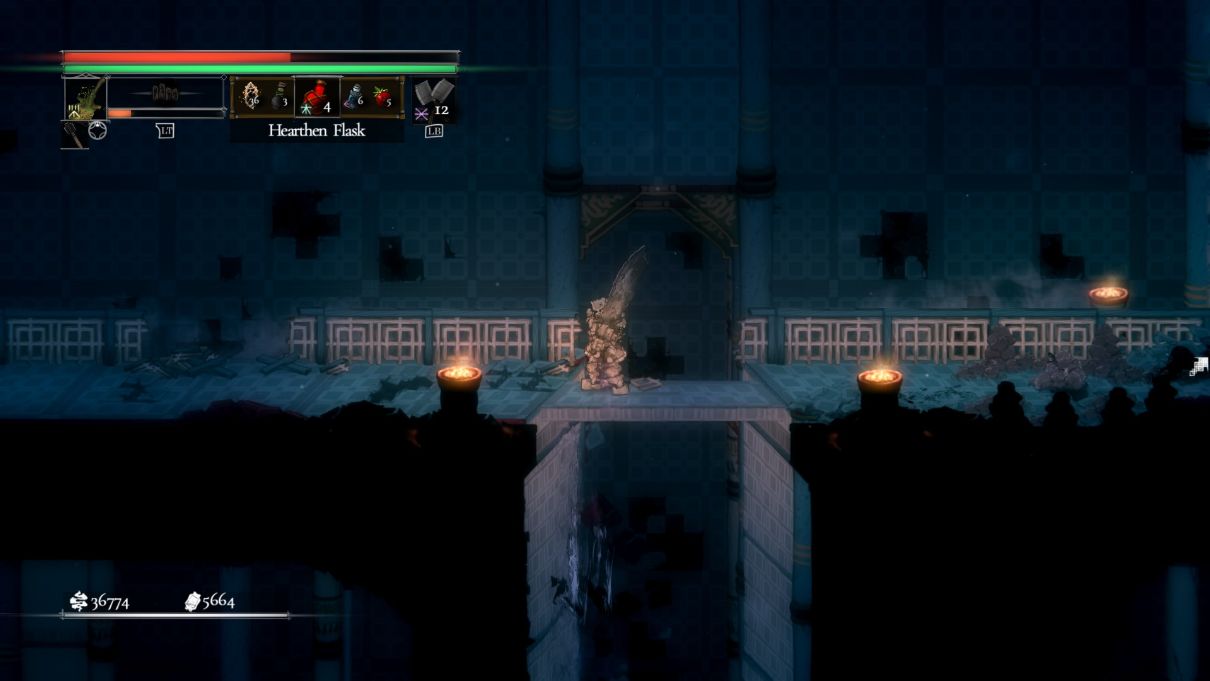
Cons
Whilst I continue to have a great time with Salt and Sacrifice, there are some negatives that don’t go unnoticed. Firstly, PvP is not all the way there yet. There are exploits, connection issues, and general netcode stuff that can sometimes make multiplayer a little annoying. I do understand though that these kinds of mechanics take time to iron the kinks out of and hopefully future patches will make the PvP more consistent.
I also found that enemy AI is sometimes a pinch too aggressive in certain situations. There were a number of instances where I had to platform my way up a level, only to find that enemies further up had already aggro’d and were camping on the very end of the ledge I needed to get to. Needless to say, this was kind of infuriating. Especially so as my first run through was as a melee build, so my options of overcoming these situations were severely limited.
The mage hunts are largely and overwhelmingly fun. I did find that certain mages were able to retreat to more areas than others. In these cases, chasing the mage up, down, and all around became tiring and dragged hunts out for far longer than they needed to be.
Whilst the focus of the gameplay is quite clearly the mage hunting, the actual world bosses were a bit underwhelming and deserved more love. They’re pretty average in terms of design and the battles themselves are quite forgettable. This is one area where the first installment in the Salt series is definitely superior to the newest.

Verdict
Salt and Sacrifice does have room for improvement. That said, the things I disliked about the game are far outweighed by the swaths of things this game gets right. I was hooked from the word “Go!” and even though I’ve finished the game, I’m still hooked. There’s so much to experiment with, so many more hunts to carry out and that doesn’t even factor in the multiplayer! After every sitting with this game, I found myself wanting more. Surely that’s the best endorsement a game could receive? When you stop playing, but you don’t really want to. When the credits roll, but you really wish they weren’t.
Salt and Sacrifice is a fantastic title with an infectious gameplay loop that makes it hard to put down, but easy to recommend.
SALT AND SACRIFICE IS RECOMMENDED

If you enjoy RPGs, you may enjoy our review of Mortal Shell, an amazing ‘Souls-like’.
Many thanks go to Ska Studios for a PC review code for this title.
Damien (dkpriory) has grown up gaming, from the humble days of the Atari all the way through to modern PC gaming. Unafraid to let a game steal his life for a few months, he is passionate about playing something immersive but also yearns for something to take him back to his childhood. Sadly no longer a member of the NookGaming team or creating content, but check out his archives on Youtube here.

